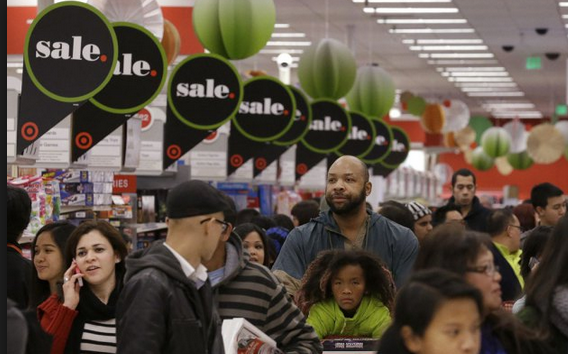US Growth Surges as Claims Drop Sharply
 Courtesy of Reuters: The U.S. economy grew faster than initially estimated in the third quarter as businesses aggressively accumulated stock, but underlying domestic demand remained sluggish.
Courtesy of Reuters: The U.S. economy grew faster than initially estimated in the third quarter as businesses aggressively accumulated stock, but underlying domestic demand remained sluggish.
Separate data showed the number of Americans filing new claims for unemployment benefits unexpectedly fell last week, a hopeful sign for the labor market recovery.
Gross domestic product grew at a 3.6 percent annual rate instead of the 2.8 percent pace reported earlier, the Commerce Department said on Thursday. Economists polled by Reuters had expected output would be revised up to only a 3.0 percent rate.
The third-quarter pace is the fastest since the first quarter of 2012 and marked an acceleration from the April-June period’s 2.5 percent rate. Businesses accumulated $116.5 billion worth of inventories, the largest increase since the first quarter of 1998. That compared to prior estimates of only $86 billion.
Inventories accounted for a massive 1.68 percentage points of the advance made in the July-September quarter, the largest contribution since the fourth quarter of 2011. The contribution from inventories had previously been estimated at 0.8 percentage point. Stripping out inventories, the economy grew at a 1.9 percent rate rather than the 2.0 percent pace estimated last month.
A gauge of domestic demand rose at just a 1.8 percent rate. The strong inventory accumulation in the face of a slowdown in domestic demand means businesses will need to draw down on stocks, which will weigh on GDP growth this quarter.
Fourth quarter growth estimates are already on the low side, with a 16-day shutdown of the government in October expected to shave off as much as half a percentage point from GDP.
 Consumer spending, which accounts for more than two-thirds of U.S. economic activity, was revised down to a 1.4 percent rate, the lowest since the fourth quarter of 2009. Spending had previously been estimated to have increased at 1.5 percent pace.
Consumer spending, which accounts for more than two-thirds of U.S. economic activity, was revised down to a 1.4 percent rate, the lowest since the fourth quarter of 2009. Spending had previously been estimated to have increased at 1.5 percent pace.
Consumer spending grew at a 1.8 percent rate in the April-June period. There were upward revisions to business spending, but estimates for residential construction were lowered. The trade deficit was larger than previously estimated, resulting in trade being neutral to growth in the third quarter.
Initial claims for state unemployment benefits dropped 23,000 to a seasonally adjusted 298,000, declining for a third straight week, the Labor Department said. Claims for the prior week were revised to show 5,000 more applications received than previously reported.
Economists polled by Reuters had expected first-time applications to rise to 325,000 last week. The four-week moving average for new claims, which irons out week-to-week volatility, fell 10,750 to 322,250.
A Labor Department analyst said no states had been estimated and there were no special factors influencing the report.
However, he noted that adjusting the data for seasonal fluctuations around this time of the year remained a challenge. Last week’s report covered the Thanksgiving holiday, which could have had some impact on the reading.
The claims report has no bearing on November’s employment report as it falls outside the survey period. Coming on the heels of a report on Wednesday showing a pickup in private sector hiring, it bodes well for the labor market.
The government is expected to report on Friday that nonfarm payrolls increased 180,000 last month and the unemployment rate fell to 7.2 percent from 7.3 percent, according to a Reuters survey of economists.
The claims report showed the number of people still receiving benefits under regular state programs after an initial week of aid fell 21,000 to 2.74 million in the week ended Nov. 16. That was the lowest level since December 2007.
Category: Featured, General Update










